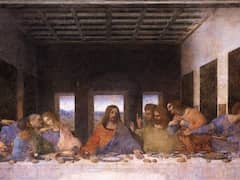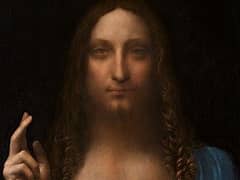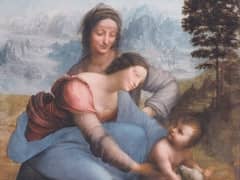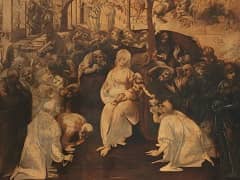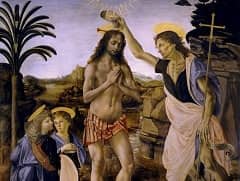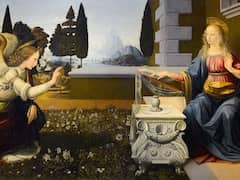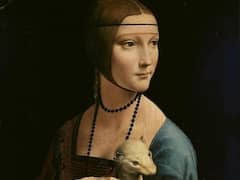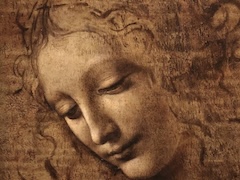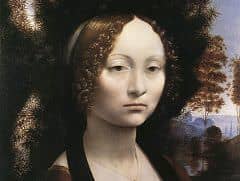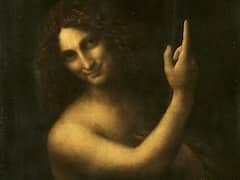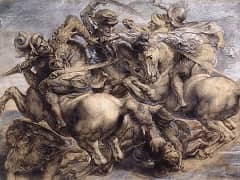The Virgin of the Rocks - by Leonardo Da Vinci
The Virgin of the Rocks (sometimes The Madonna of the Rocks) is the name used for two Leonardo da Vinci's paintings, of the same subject, and of a composition which is identical except for two significant details. One painting usually hangs in the Louvre, Paris, and the other in the National Gallery, London. Both paintings show the Madonna and Christ Child with the infant John the Baptist and an angel, in a rocky setting which gives the paintings their usual name. The significant compositional differences are in the gaze and right hand of the angel. There are many minor ways in which the works differ, including the colours, the lighting, the flora, and the way in which sfumato has been used. Although the date of an associated commission is documented, the complete histories of the two paintings are unknown, and lead to speculation about which of the two is earlier.
A wish to get to the heart of nature and know the secrets was perhaps Leonardo da Vinci's main impetus in everything he did; and such interest as he had in the painting might almost have been to set up rivals to nature, fusing all his knowledge of her into the creation of things super-natural. In The Virgin of the Rocks, the laws are nature's but the final creation Leonardo's. And he here defies the natural in many ways that cut across previous artistic assumptions. The result is organic rather than intellectual. Other painters threw a deliberate schema over nature, seeing it in terms of conscious mingling, enriched by art, whereby buildings were allied to scenery, minor groups of figures enlivened background spaces, and objects were artistically re-arranged to mirror a cosmic order. This showed the artist's invention. In this painting, Leonardo designs a grotto which is marvelous for seeming not human work at all. It appears the product of natural forces: the rocks ribbed and smoothed by the constant motion of water, present in the winding river but felt in the subaqueous light and as giving moisture for the plants - each recorded with botanical accuracy - that grow so thickly and yet are pallid.
It still seems a region untrodden by man, because the figures who kneel in the grotto have something of the same inevitable growing quality as the plants; they are no stranger in their setting, and there is no sense of their incongruity within it.
Louvre version
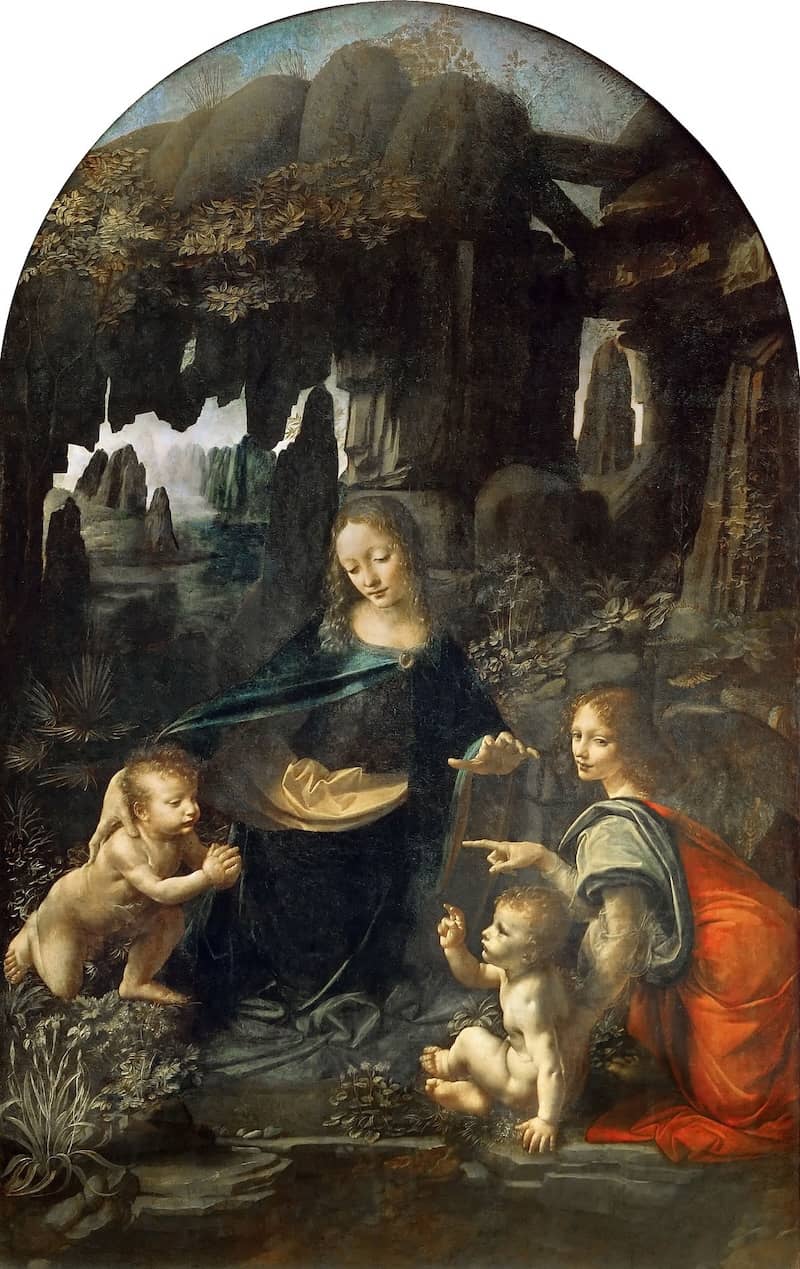
The Virgin of the Rocks which usually hangs in the Louvre is considered by most art historians to be the earlier of the two and date from around 1483-1486. Most authorities agree that the work is entirely by Leonardo. It is about 8 cm (3 in) taller than the London version. The first certain record of this picture is in 1625, when it was in the French royal collection. It is generally accepted that this painting was produced to fulfill a commission of 1483 in Milan. It is hypothesized that this painting was privately sold by Leonardo and that the London version was painted at a later date to fill the commission. There are a number of other theories to explain the existence of two paintings. This painting is regarded as a perfect example of Leonardo's "sfumato" technique.
London version
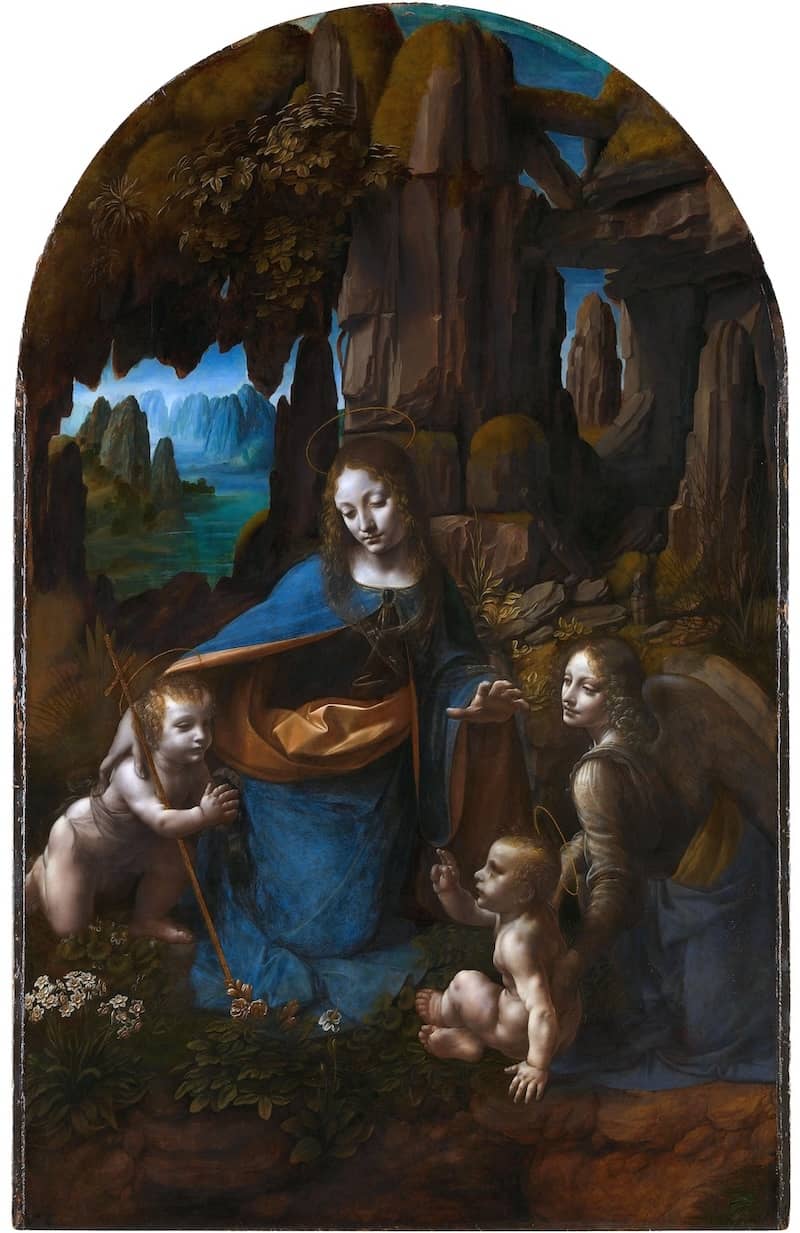
A very similar painting in the National Gallery, London, is also ascribed to Leonardo da Vinci, and ascribed a date before 1508. Originally thought to have been partially painted by Leonardo's assistants, the study of the painting during the recent restoration has led the conservators to conclude that the greater part of the work is by the hand of Leonardo. It was painted for the chapel of the Confraternity of the Immaculate Conception, in the church of San Francesco Maggiore in Milan. It was sold by the church, very likely in 1781, and certainly by 1785, when it was bought by Gavin Hamilton, who took it to England. After passing through various collections, it was bought by the National Gallery in 1880.


